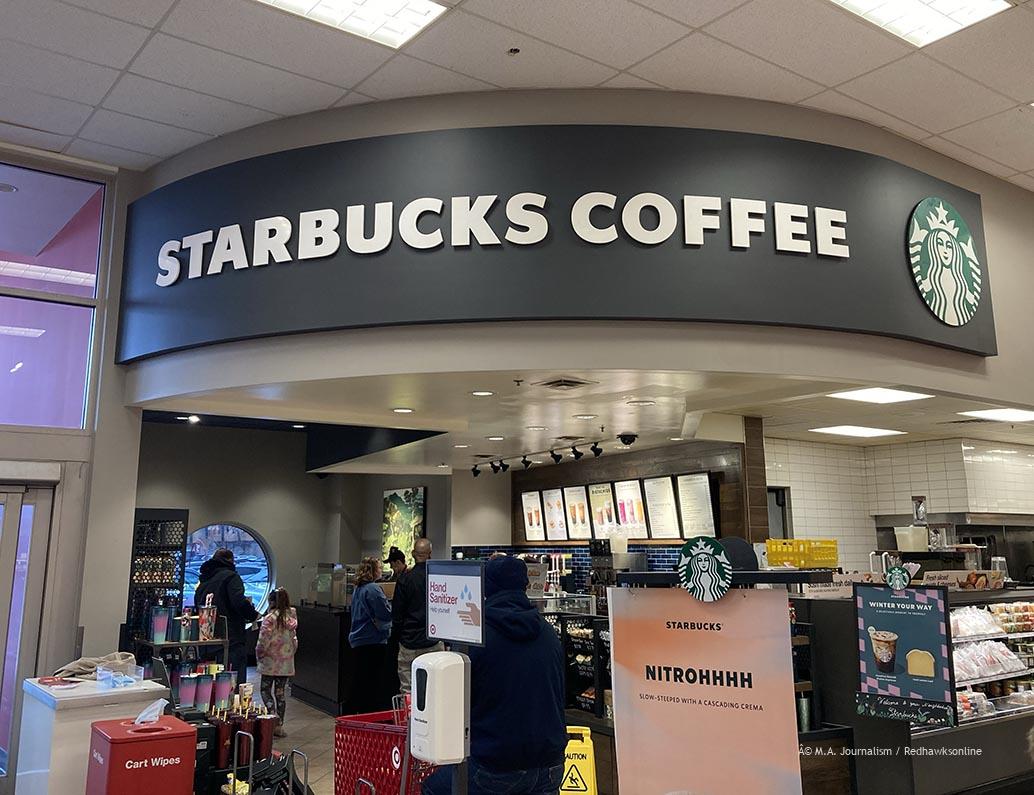Coffee drinkers may not be saving as much as they hope
If you think you have enough money to get Starbucks every day and avoid unnecessary advertisements, you’re in for a surprise. Starbucks, however, would like nothing more than to keep you — and your wallet — away from such information. Don’t believe it? On their corporate website, Starbucks Stories & News, the company admitted it in a 2018 article, stating the following: “With digitally engaged customers purchasing 2 to 3 times as many products as those that are not digitally-engaged, Star bucks continues to see significant promise in its digital initiatives as an enabler for customer convenience, awareness and value.” Customers who have the Starbucks app are under the impression that they are saving money but in actuality, these customers are often unknowingly purchasing far more food and drinks than customers without the Starbucks app.
Recently, a handful of MA students were asked to complete a survey on their Starbucks purchases. Of the eighteen students surveyed, ten had the Starbucks app. Five of those students said they spent the same amount of money with the app, two said they spend less with the app, and two said they spend more with the app. If Starbucks’ statement is true for almost all Starbucks rewards users, some of these students are spending more than they think.
The interviewed students were also asked if they used their Starbucks rewards program stars to obtain “free” items – stars exchanged for a free drink, a bag of coffee, et cetera. But it’s important to note that stars expire every six months, encouraging spending. In response to this, two of those with the app said that they spend their stars frequently. Four spend stars infrequently, and four others never spend stars.
At times Starbucks goes even further than usual to convince you, a consumer, to buy their drinks – along with the rest of the world’s businesses. Here’s a look at some of the things the Starbucks app offers a few times a year: Bonus star challenges, double star days, triple star day, and member-only games. If you order in-store, a dollar will grant you one star. If you order on the app, a dollar equals two stars.
Unless customers want their hard-earned money to go down the drain, they are forced to spend their stars, which often only cover part of a purchase (such as a free drink but not a free bakery item), encouraging more Starbucks visits and spending. Additionally, since stars expire every six months, customers may feel pressured to spend stars more frequently or attempt to gain some at the last minute to reach a certain threshold that allows a “free” item. For example; a “free” specialty drink costs 200 stars at Starbucks. If a customer pays with cash, they receive one star per dollar. If this customer’s regular purchase costs five dollars, that’s five stars per visit. That’s 40 visits to get one “free drink”. Now, certain variables can affect the stars a customer gains per order, such as if they pay in person or on the app, or if they get more than just a drink, or – minutely, the direct price of each drink – but even so, if the aforementioned customer paid in the app and built up two stars per dollar, they still would need 20 orders to get a specialty drink with their stars. Or if they wanted to spend more stars for something bigger, that’s even more time and money. More time and money that customers with the app are more likely to spend.
You might be thinking: this doesn’t apply to me. I don’t drink Starbucks. True. But you’ll think about it when you download a restaurant app. Or a retail app. Or a business app. Kohl’s Cash? Target Circle? Caribou Perks? My Cub Rewards? Caniac Club? Chick-fil-A One? All popular establishments that vie for customer loyalty and purchases. Modern-day advertisers do their best to steal our attention and convince us to spend more money than what we actually ‘need’ to spend. So next time, when you listen to an advertisement, download an establishment’s app, or decide to use that coupon or “limited-time offer”, pause for a minute. It might save you a lot.

